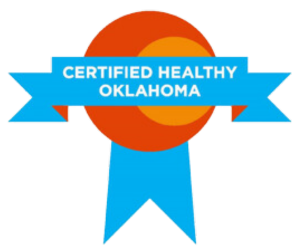TULSA, OK – [October 25, 2019] – The Tulsa Health Department was recently awarded $1,226,891 by the U.S. Department of Housing and Urban Development (HUD) to protect children and families from lead-based paint and home health hazards. THD Environmental Health Services staff will use the funds to address lead hazards to provide safer homes for income-eligible families with children residing in three pre-identified ZIP codes in Tulsa County.
“Safe housing is a critical component of healthy living, and every child deserves to grow up in a home free from harmful hazards like lead-based paint,” said THD Environmental Health Services Supervisor Adam Austin. “This funding will allow our Environmental Health Services program to perform lab certified lead testing as well as provide resources for remediation opportunities to owners and tenants that qualify.”
The grant is provided through HUD’s Lead Based Paint Hazard Reduction Program to identify and clean up dangerous lead in low-income housing.
“HUD congratulates the Tulsa Health Department in their efforts to successfully apply for Lead Hazard Control funding,” said Matthew Ammon, Director of HUD’s Office of Lead Hazard Control and Healthy Homes. “Every child deserves the opportunity to grow up in a healthy home, and yet far too many continue to be exposed to dangerous lead paint and other health hazards found in homes. HUD congratulates the Tulsa County in their efforts to protect families and children from these exposures and ensure they are able to reach their full potential in life.”
When applying for this grant, THD Environmental Health Services used data to identify which ZIP codes had the highest concentration of older homes that meet age criteria for probable lead, then overlaid that with census data to determine the target ZIP codes where the greatest number of families with small children reside. The team identified ZIP codes 74110, 74106 and 74127 as the area of greatest need.
“Providing lead-based paint hazard control services at no cost to our most vulnerable community members is new for Tulsa County and significant public health effort,” said Adam Austin. “We can currently test paint samples brought into our lab for the presence of lead, but this funding will allow us to provide recourse for families who qualify.”
Although lead-based paint was banned for residential use in 1978, HUD estimates that about 24 million older homes still have significant lead-based paint hazards today. However, homes receiving rental assistance, including public housing, tend to have a lower prevalence of lead-based paint hazards compared to private housing. While most public housing has already undergone abatement, there are still some properties where lead-based paint remains and hazards have redeveloped.
Lead-contaminated dust is the primary cause of lead exposure and can lead to a variety of health problems in young children, including reduced IQ, learning disabilities, developmental delays, reduced height, and impaired hearing. At higher levels, lead can damage a child’s kidneys and central nervous system and can even be deadly.
The grant supplements ongoing efforts by THD to address unsafe housing conditions, like the Safe & Healthy Homes initiative launched in April. Safe & Healthy Homes incentivizes property owners have their rental properties inspected on a volunteer basis. Since inception, around 1,000 housing units have received an eight-point healthy home inspection for hazards such as roof leaks, carbon monoxide detectors, smoke detectors, pests and appliance safety.
For more information, call 918-595-4200 or visit tulsa-health.org/housing.
# # #






